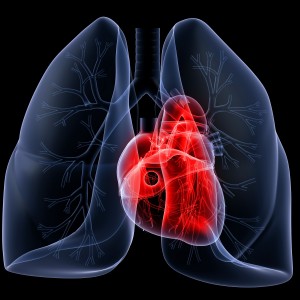Researchers Reveal Benefits of Denervation Over Medication in Pulmonary Arterial Hypertension

 Findings from a recent study presented this week during the American College of Cardiology/i2 Scientific Session revealed that denervation of the pulmonary artery through catheterization led to a decline in pulmonary arterial hypertension (PAH)-related events and an improvement in heart function and hemodynamic variables in patients with pulmonary hypertension.
Findings from a recent study presented this week during the American College of Cardiology/i2 Scientific Session revealed that denervation of the pulmonary artery through catheterization led to a decline in pulmonary arterial hypertension (PAH)-related events and an improvement in heart function and hemodynamic variables in patients with pulmonary hypertension.
The research team from Nanjing First Hospital in China led by Shao-Liang Chen, MD conducted their study in 28 patients for a mean time of 4.24 years following pulmonary hypertension (PH) diagnosis. The results showed that the most common etiology was idiopathic PAH (39.3%). All patients were asked to stop their medication for PH including prostacyclin, phosphodiesterase type 5 inhibitors and antagonists of the endothelin receptor.
After examination using right heart catheterization and cardiac echocardiography, patients received standard medication for a period of 6 months, followed by pulmonary artery denervation and a 6-month evaluation following surgery.
The researchers found that the 6-minute walk distance improved in both medication therapy and after denervation, and these results were even more pronounced after denervation in comparison to medication.
[adrotate group=”4″]
They found no changes in hemodynamic measures on medical therapy and right heart catheterization, but denervation was related to a rise in cardiac output and a reduction in mean pulmonary artery pressure (PAP), systolic PAP, mean right atrial pressure (RAP), and pulmonary vascular resistance (PVR). They also observed an improvement in mean and systolic PAP, mean RAP, RV systolic pressure, and RV Tei index on medical therapy, assessed with echocardiography. Pericardial fluid after denervation was also observed.
When they compared changes between both groups, they found a higher increase in cardiac output and higher decreases in catheterization-measured PVR, mean PAP, echocardiography-assessed mean PAP, pericardial fluid, and RV Tei index following denervation. There was also a functional class improvement (World Health Organization) in both groups.
After a 6-month follow-up, they observed that 42.9% of study participants experienced PAH-related events in the medication group and 10.8% of participants that underwent denervation therapy. The events included initiation of treatment with IV or subcutaneous drugs, worsening of PAH, lung transplantation, atrial septostomy, or all-cause death.
[adrotate group=”3″]
When they compared the two groups in terms of hospitalization and cost, they found that the group under medication had higher rates of rehospitalization and higher costs than the denervation group.
“Further randomized clinical [studies are] required to show the real benefit of pulmonary artery denervation in reducing mortality in patients with idiopathic [PAH], secondary pulmonary arterial hypertension, and also secondary pulmonary hypertension from left heart disease,” Dr. Chen said in a recent news release.







